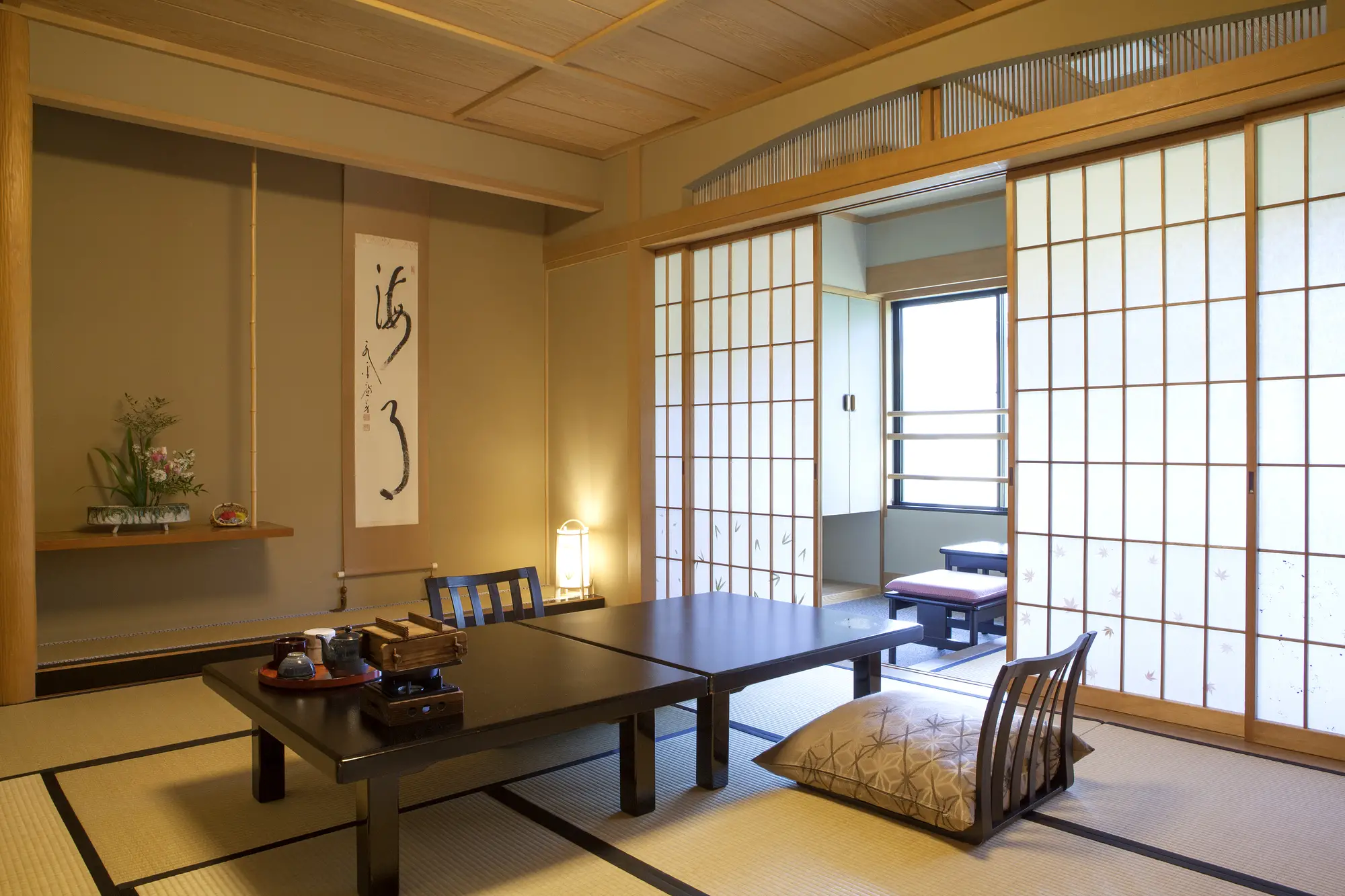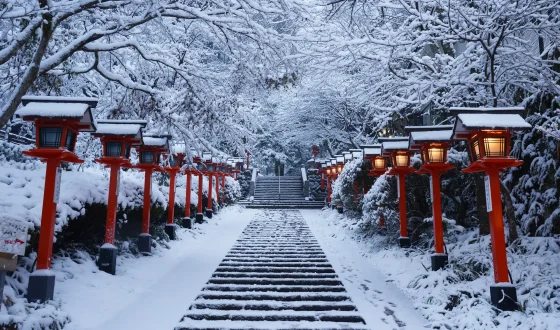A Quick Glance At Traditional Japanese Room – Basic Things To Know
Japanese people are obviously doing an incredibly great job to preserve their traditional culture. You can see traces of the past literally in every corner of this beautiful country. Just similar to fascinating cuisine or beautiful ancient shrines, Japanese traditional bedroom has been around for centuries and is one of the most unique cultures here. In today’s location guide, we will give you everything you need to know about the Traditional Japanese Room.
A Quick Glance At Traditional Japanese Room – Basic Things To Know
1. History
Traditional Japanese Room is a Japanese-style room, which is called a Washitsu (和室) in Japanese or frequently called a “Tatami Room” in English. The history of Japanese-style rooms dated back to ancient and medieval Japan (1185-1606 CE). Back then, they were first used as study rooms for the elite. Gradually, they become more popular, spreading cross over Japan and were used as Japanese traditional bedrooms. Nowadays, you can see these kinds of rooms in a Ryokan which is a traditional Japanese inn. If you are planning to visit Japan and wondering where to stay, well, you should not miss the opportunity to stay in a Ryokan and immerse yourself in a completely traditional atmosphere there.

2. Design
There are many things that can be incorporated into a traditional Japanese room but in today’s blog, we will only some of the most basic features.
2.1. Tatami
Tatami mat, appearing from ancient times, is a type of mat made from dry thick straws. The name Tatami is derived from the verb “Tatami” which means “to fold”. They are soft yet still thick enough to comfortably walk on or lie down. Nowadays, people use chemical fibers instead of straw to increase the strength and insulation. In winter, tatami mats help to prevent from the cold while in the summer, they help to reduce the heat. However, there are still some significant disadvantages. They create living habitats for bugs and cockroaches! In addition, the sedge mat is quickly damaged by external factors. Therefore, usually from 3 to 5 years, the outer sedge mat will be replaced.
A tatami room with a floor surface is created by tightly stacking rectangular mats together. Each mattress (waratoko) has a traditional standard size of 910mm × 1820mm, 55mm thick.
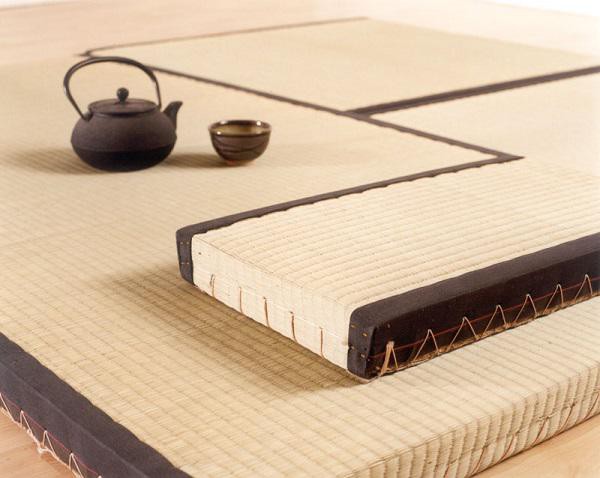
Tatami mats are used to measure the size of Japanese style rooms (e.g. a 4-mat room)
2.2. Doors
There are two types of doors that exist in a traditional Japanese room. They are Fusuma and Shoji.
2.2.1. Shoji
Shoji door is a type of traditional Japanese sliding door, originating from China. It is introduced to Japan from the middle of the 7th to the 8th century. The word “Shoji” means “separator”. At that time, the shoji door was just a fixed door, covered with paper or cloth. But by the 12th century, the Japanese renovated the door in its own style. The sliding Shoji door is made of wooden lattices and covered by translucent paper (washi paper).

Shoji is loved not only in Japan but also in many countries. The reason for this is largely thanks to Washi paper. Washi paper can ensures the privacy of the rooms but still has high aesthetics. It can reflect light from the garden, combined with the unique design of the door frame to make the light more beautiful.

Some shoji doors also have sliding panels that can move up and down like small windows so more light or air can enter the room. There is a special kind of Shoji door called “Yukimi shoji”. A part below the door is designed in the form of a folding door. This is a good idea to help everyone spend time enjoying the snowy scenery, watching the white snow silently cover the ground.

2.2.2. Fusuma
Japanese rooms are often divided large spaces into small rooms depending on the owner’s needs. And what people use when they want to divide the space in a Japanese house is “Fusuma – sliding door”. Similar to Shoji, Fusuma is also a paper-covered sliding door. However, its cover is thicker and often painted with flowers, landscapes, or birds. Fusuma has appeared in ordinary Japanese houses since the 20th century. During this period, the number of houses with Japanese and Western European-style rooms increased so much that the use of Fusuma to divide the rooms became so important. However, nowadays, in Japanese homes and ryokan, Fusuma tend to be simply decorated.

Read more:
- How Much Is An Apartment In Japan? Expensive Or Not?
- Where To Stay In Osaka? – Useful Tips For Foreigners
3. Furniture
3.1. Zabuton
Zabuton (座 布 団) is a floor cushion used for sitting in Japan. As mentioned above, tatami is easily damaged so Japanese people will use light and sturdy cushions instead of chairs. Zabuton has a wide range of sizes, thickness and patterns of the cover. In classic Ryokan, normally people will change Zabuton when the new season is coming. The colors and patterns of Zabuton should be matched with furniture and decorations of the entire room.
It might be difficult to sit comfortably on Zabuton at first as you have nothing to lean your back on. In this case, legless chairs can be useful.

3.2. Low tables
In ancient times, Japanese people studied, ate and slept on the floor. It has gradually become a common practice which is the reason why low tables are very popular here. In fact, you can still see low tables in a Western-style house in Japan.
Low table is light and compact, which not only helps to reduce the damage on the tatami mats but also is a great solution to deal with the cold weather. When the winter comes, Japanese people will use Kotatsu which is a heatable low table. It is covered by a blanket and a heating system underneath. Simple but yet still very convenient!

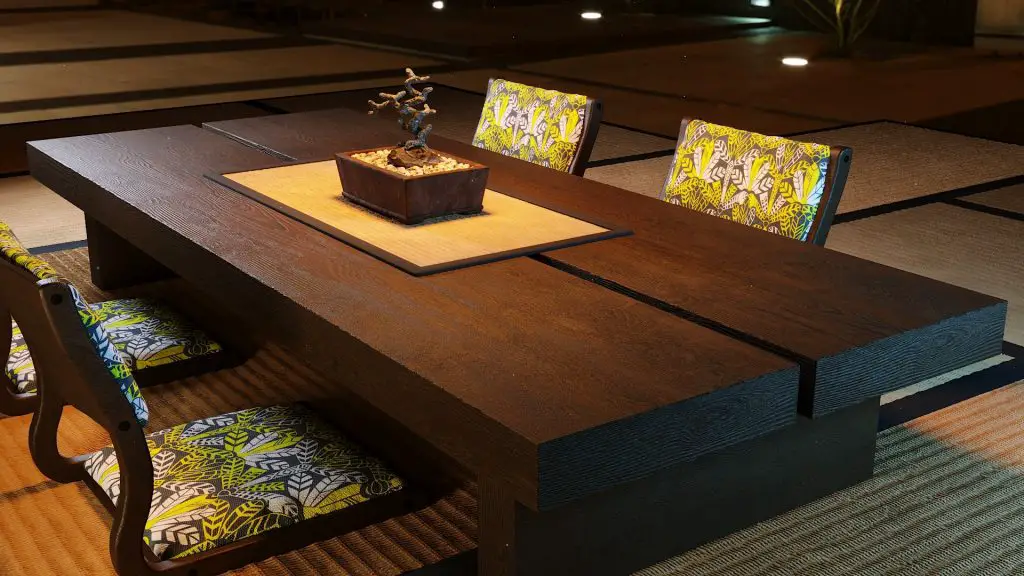
Legless chairs along with a low table
3.3. Tansu (箪笥)
Tansu is a Japanese traditional mobile storage cabinetry. It was first appeared in the Genroku era of the Edo period (1688–1704). This product is made totally from woods. Due to the high cost of materials, Tansu is not very common. It was only popular with the nobles in the past.
Nowadays, only few workshops produce Tansu.

3.4. Partitions
Japanese traditional partitions are portable folding thin partitions. They have a zigzag shape and their frames are made from wood so that they can stand still without any extra support. They have two kinds which are byobu and tsuitate. Japanese people use them to enhance privacy. But nowadays, more or less, they are used for decoration purpose only. Both types have various sizes and their designs are also very diversified.
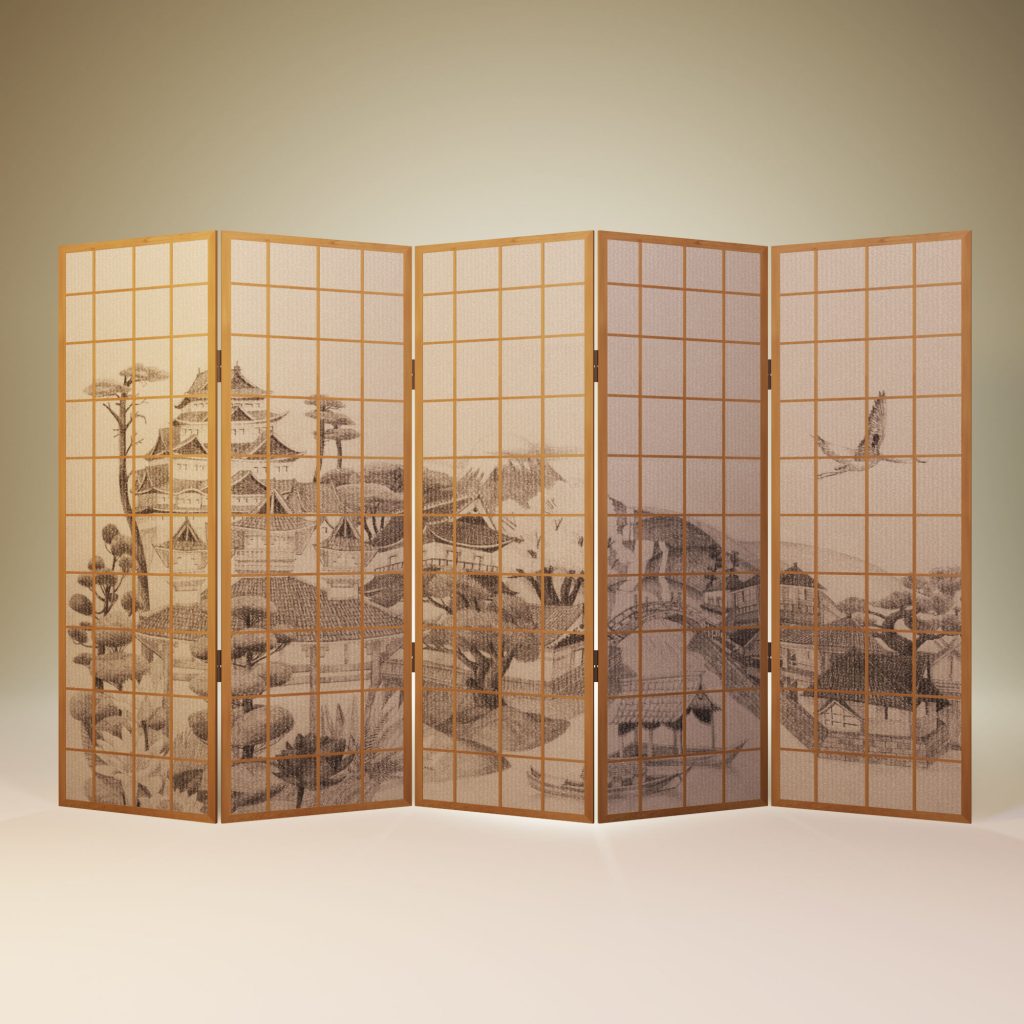 3.5. Lamps
3.5. Lamps
An traditional lamps are quite indispensable to a traditional Japanese room. Similar to other furniture mentions above, these lamps also have wooden frames and covered by washi paper. They have rectangular shapes. Back then, people put candle or rapeseed oil inside the lamp but nowadays they use LED light instead. Throughout the ages, people use them not only as sources of light. They also symbolize vitality, social status and good luck.

5. Sleeping and sitting etiquette
Yes, in the past, Japanese people basically do everything on the floor. So remember to take off your shoes before entering the room. Slippers are also strictly not allowed.
Normally you will find no bed in a Japanese traditional bedroom. People will use a thick and soft futon to sleep. While during the day, futon is folded and placed neatly in the corner or in a closet, at night, they will be laid down directly on tatami mats. It is a very interesting experience. You surely do not want to miss it while spending your holiday in Japan!
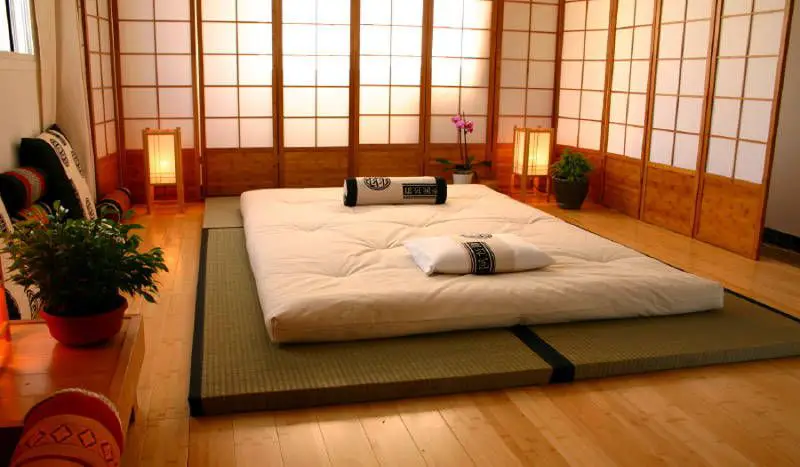
Futon are placed directly on the floor.
Please click the link below for more information:
FAQ
What is a traditional Japanese room like?
In short, a traditional Japanese room has tatami mats on the floor and is surrounded by sliding wooden doors. Furniture that is normally seen in a Japanese style room is low table, zabuton, traditional lamp, and partitions.
What is a Japanese tatami room?
Japanese tatami room is a washitsu (和室). It has a traditional tatami floor and decorated in a traditional Japanese style.
What is a traditional Japanese house called?
In Japan, a traditional Japanese house is called Minki. Besides, a traditional Japanese inn is called Ryokan.
How do I make my room look Japanese?
The most basic rule you need to follow is keeping everything simple. Do not try to stuff too many unnecessary things in your room. Everything must be beautiful and elegant.
Then, start decorating your room with basic furnitures which are listed above. If you can not afford fancy things, just pick up simple things such as low tables, futon, mats, zabuton. Remember to keep warm tone for your room.

If you have low budget, a simple room like this one is not a bad option.

Conclusion
Traditional Japanese room is obviously a unique and beautiful culture in the land of the rising sun. Now, are you interested in decorating your bedroom in Japanese style? Or do you want to truly feel like a Japanese by spending a night in a Ryokan? If you have any query, please feel free to share with us in the comment section below.

